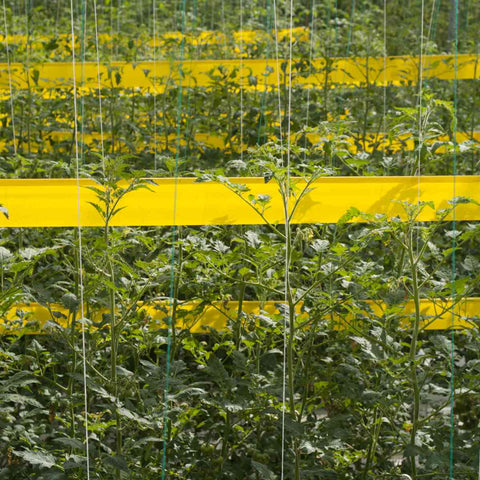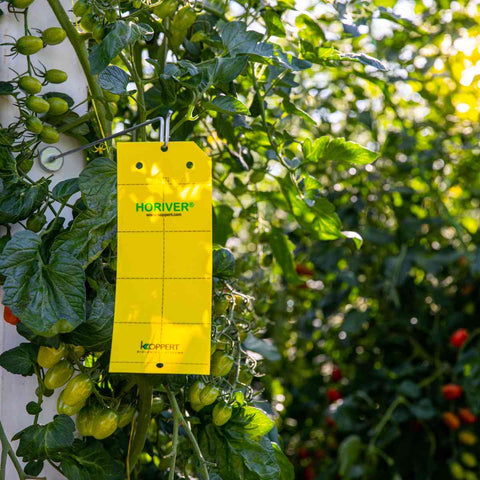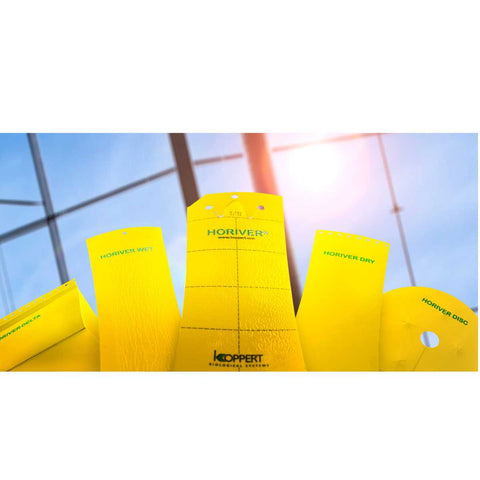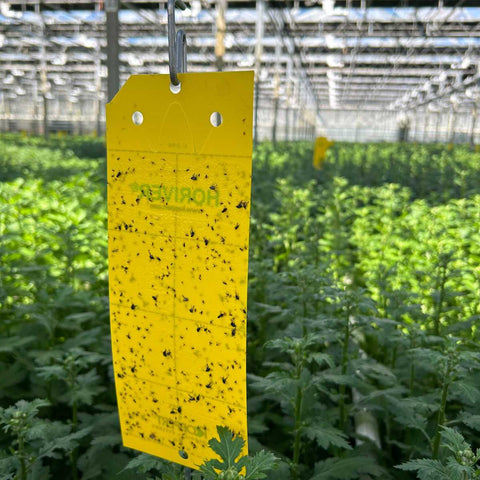Mass trapping is a highly effective method for pest control, offering numerous advantages for growers. By strategically deploying Horiver sticky cards and roller traps, growers can capture pests in large numbers, curbing their populations and mitigating potential damage to crops. This approach not only saves on chemical applications and biological control inputs, it also contributes to a more sustainable and environmentally friendly pest management strategy.


Moreover, mass trapping serves as a valuable tool in preventing pest migration within controlled environments like grow rooms and greenhouses, creating physical barriers that intercept and capture pests before they can infest other areas. In this blog post, we explore the benefits of using Horiver sticky cards and roller traps for mass capturing insects, emphasizing their impact on future pest populations and their ability to prevent migration within the controlled environment, as well as delving into their rates and efficacy.


Disrupting Future Populations
When using Horiver sticky cards and roller traps, every insect that becomes trapped represents a significant disruption to the reproductive cycle of pests. By capturing adult insects, the cards prevent them from laying eggs or live birthing future generations. This targeted approach reduces pest populations over time and minimizes the need for traditional chemical insecticides.
For example, consider the case of thrips. A single thrips can lay hundreds of eggs over the course of their lifetime. By trapping these adults on Horiver sticky cards or roller traps, we prevent hundreds of new thrips from developing in the crop, significantly reducing the overall population and mitigating potential crop damage. This example also works with whiteflies, winged aphids, fungus gnats, shoreflies, and leaf miners.


Halting Migration Within Controlled Environments
Another key advantage of using Horiver sticky cards and roller traps is their ability to impede the migration of pests within a grow room or greenhouse. Insects naturally move from one section of the controlled environment to another, seeking new hosts and expanding their territory. This migration can result in the rapid spread of infestations, leading to widespread crop damage.
By strategically placing Horiver sticky cards or roller traps in various locations throughout the cultivation area, we create a physical barrier that intercepts and captures flying insects in flight. This simple yet effective measure prevents pests from moving freely and limits their impact on different sections of the facility.  For instance, consider a scenario where whiteflies are infesting a tomato crop in one corner of a greenhouse. Without intervention, the whiteflies can easily disperse to other healthy plants, causing widespread damage. By placing Horiver sticky cards or roller traps near the heads of the tomato plants in the path of the whiteflies, we intercept and capture them, thus preventing the migration and subsequent infestation in other parts of the greenhouse.
For instance, consider a scenario where whiteflies are infesting a tomato crop in one corner of a greenhouse. Without intervention, the whiteflies can easily disperse to other healthy plants, causing widespread damage. By placing Horiver sticky cards or roller traps near the heads of the tomato plants in the path of the whiteflies, we intercept and capture them, thus preventing the migration and subsequent infestation in other parts of the greenhouse.
So where should you place them? This snippet comes from our HORIVER STICKY CARDS: A POWERFUL TOOL FOR PEST MANAGEMENT AND PREVENTION blog:
"For foliage or flower pests, position Horiver sticky cards or roller traps within the crop canopy. In tall crops like cucumbers, tomatoes, and peppers, position cards just above the top of the canopy and adjust while plants grow.
When it comes to crops with a low canopy like strawberries, lettuce etc., support the cards by canes or wire holders and install them maximum 30cm above the crop.
For crops like cannabis and tropical houseplants, place the cards above the top of the canopy, but make sure the cards are far enough away from artificial lights. The lights have been known to melt the cards, if the lights release a lot of heat.
Finally, if you are trying to capture soil-dwelling pests, like fungus gnats, shore flies, root aphids, or thrips pupae, place the cards near the soil line for all crops."


Now that we know what Horiver sticky cards and roller traps are capable of let's delve into the number of cards and traps needed to mass capture pests, and what the difference in efficacy is for both products. Should one be used over the other?
Horiver Card and Roller Trap Rates
In all cases where pest pressure is expected to be low - medium, apply Horiver small cards throughout the crop for mass trapping, at a rate of 2,000/ha. Space them throughout the crop in a grid-style pattern.
In all cases where pest pressure is expected to be high, increase mass trapping by applying roller traps to each post row, prior to crop planting, at head height and increase sticky card density by using medium or large size sticky cards at a rate of 2,000/ha.
Always choose yellow Horiver cards or roller traps unless you are using a large amount of Thripor or parasitic wasps like Miglyphus and Enermix in your crop. These bio-controls are attracted to yellow Horiver sticky cards and roller traps, so if you are using them use blue Horiver sticky cards or roller traps instead.
What is the difference in efficacy between Horiver sticky cards and roller traps?
In the above paragraph, you will notice we suggested using Horiver sticky cards over roller traps, unless you are expecting an increase in pest pressure for the upcoming season. Well, we do understand that placing 2,000 Horiver sticky cards per hectare is not always practical and that it is easier to use roller traps in certain scenarios. Over the last 30 years working in Canadian grown crops, we have noticed there is a higher efficacy with Horiver sticky cards. Compared to roller traps, Horiver sticky cards have a different thickness, glue, and color pigment, which affects the energy signature reflected through the cards and in turn attracts more pests than the roller traps. We give this information, so you can correctly choose which product is better in your grow room or greenhouse.

In conclusion, mass trapping using Horiver sticky cards and roller traps is a highly effective method for pest control in grow rooms and greenhouses. This approach reduces pest populations and minimizes the need for chemical interventions, making it a cost-efficient strategy for growers. Additionally, mass trapping serves as a valuable tool in preventing pest migration within controlled environments, creating physical barriers that intercept and capture pests before they can infest other areas.
While both Horiver sticky cards and roller traps offer effective trapping solutions, Horiver sticky cards have shown higher efficacy due to their unique characteristics. However, the choice between the two depends on the specific pest pressure and practicality of deployment in the given context. By incorporating mass trapping into pest management strategies, growers can achieve improved pest control, reducing crop damage, and promoting sustainable practices in their indoor cultivation spaces.


